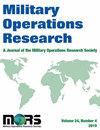大流量下并行服务器的最优路由
IF 0.7
4区 管理学
Q3 Engineering
引用次数: 1
摘要
路由控制在许多工程和管理系统中是一个重要的组成部分,该系统由多个和可能异构的服务器组成。想象一下,在每个作业(或客户)到达时,控制器将评估可用的(动态)状态信息,并决定将作业分派到其中一个服务器。状态信息可以是队列长度、到达历史、服务历史等等,这取决于应用程序的性质。控制器将如何使用可用的状态信息来最小化到达作业可能经历的平均等待时间?在“大流量下并行服务器的最优路由”这篇论文中,Ye进行了大流量分析,以确定最能利用可用状态信息的路由策略。例如,当没有可用于路由控制的状态信息时,最好的“盲”策略是以加权轮询的方式调度传入的作业,这种方式显示出某种形式的平方根规则。虽然在作业到达历史是可用的情况下,控制器应该通过密切跟踪一种“到达偏差”来利用这些信息,与最佳盲策略相比,这种策略可以减少多达50%的等待时间。该研究揭示了状态信息在路由控制中的价值,并为工程和服务系统设计提供了新的工具。本文章由计算机程序翻译,如有差异,请以英文原文为准。
Optimal Routing to Parallel Servers in Heavy Traffic
Routing control is an important component in many engineering and management systems consisting of multiple and possibly heterogeneous servers. Imagine that upon the arrival of each job (or customer), a controller will evaluate the available (dynamic) state information and make a decision to dispatch the job to one of the servers. The state information can be queue length, arrival history, service history, and so on, depending on the nature of the application. How will the controller use the available state information to minimize the average waiting time an arriving job may experiences? In the paper, “Optimal Routing to Parallel Servers in Heavy Traffic,” Ye carries out the heavy traffic analysis to identify the routing policies that best use the available state information. For example, when there is no state information available for routing control, the best “blind” strategy is to dispatch the incoming jobs in a weighted round-robin fashion that exhibits certain form of the square-root rule. Although in the case that the job arrival history is available, the controller should use the information by closely chasing a kind of “arrival deviation,” which can reduce up to 50% of the waiting time compared with the best blind strategy. This study sheds new insights into the value of state information for routing control and provides new tools for engineering and service system design.
求助全文
通过发布文献求助,成功后即可免费获取论文全文。
去求助
来源期刊

Military Operations Research
管理科学-运筹学与管理科学
CiteScore
1.00
自引率
0.00%
发文量
0
审稿时长
>12 weeks
期刊介绍:
Military Operations Research is a peer-reviewed journal of high academic quality. The Journal publishes articles that describe operations research (OR) methodologies and theories used in key military and national security applications. Of particular interest are papers that present: Case studies showing innovative OR applications Apply OR to major policy issues Introduce interesting new problems areas Highlight education issues Document the history of military and national security OR.
 求助内容:
求助内容: 应助结果提醒方式:
应助结果提醒方式:


